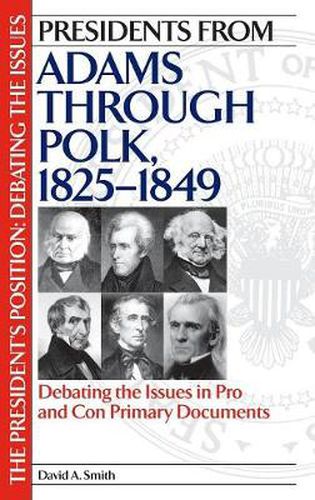Readings Newsletter
Become a Readings Member to make your shopping experience even easier.
Sign in or sign up for free!
You’re not far away from qualifying for FREE standard shipping within Australia
You’ve qualified for FREE standard shipping within Australia
The cart is loading…






It was the Era of Good Feelings, but all was not well with the young Republic. From 1825 to 1849, presidents John Quincy Adams, Andrew Jackson, Martin Van Buren, William Henry Harrison, John Tyler, and James K. Polk grappled with the legacy of the Monroe Doctrine, Indian removal, territorial expansion, the National Bank, tariffs, economic depressions, War with Mexico, near war with Great Britain, and the place of slavery in the growing nation.
As one would expect from confident citizens of the burgeoning young country, conflicting arguments swirled around the hot-button issues of the day. This rich resource of primary documents enables students to read these arguments first hand, and feel the passions and study the logic driving their often forceful positions.
All of the primary documents are annotated and placed into historical context. A thorough index concludes the work.
$9.00 standard shipping within Australia
FREE standard shipping within Australia for orders over $100.00
Express & International shipping calculated at checkout
Stock availability can be subject to change without notice. We recommend calling the shop or contacting our online team to check availability of low stock items. Please see our Shopping Online page for more details.
It was the Era of Good Feelings, but all was not well with the young Republic. From 1825 to 1849, presidents John Quincy Adams, Andrew Jackson, Martin Van Buren, William Henry Harrison, John Tyler, and James K. Polk grappled with the legacy of the Monroe Doctrine, Indian removal, territorial expansion, the National Bank, tariffs, economic depressions, War with Mexico, near war with Great Britain, and the place of slavery in the growing nation.
As one would expect from confident citizens of the burgeoning young country, conflicting arguments swirled around the hot-button issues of the day. This rich resource of primary documents enables students to read these arguments first hand, and feel the passions and study the logic driving their often forceful positions.
All of the primary documents are annotated and placed into historical context. A thorough index concludes the work.